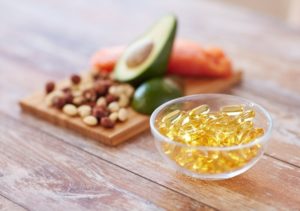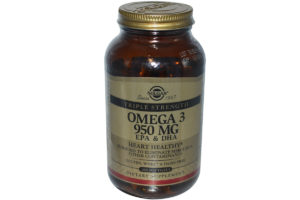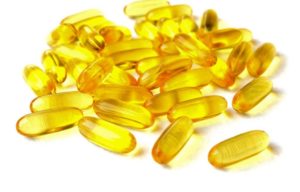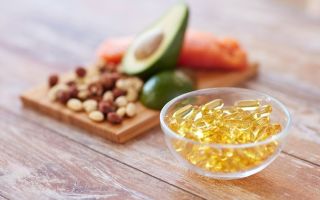Content
- 1 What is Omega-3
- 2 Benefits of Omega-3 Fatty Acids
- 3 What are Omega-3 vitamins for?
- 4 Omega-3 intake per day
- 5 Signs of a lack of omega-3 in the body
- 6 What foods contain Omega-3
- 7 Instructions for the use of omega-3 capsules
- 8 Omega-3 overdose and side effects
- 9 Contraindications for taking Omega-3
- 10 What is the difference between Omega-3 and fish oil
- 11 How to choose Omega-3
- 12 Conclusion
- 13 Reviews
The benefits and harms of Omega-3 have been discussed by experts for a long time. Polyunsaturated lipids play an essential role in maintaining health and wellness.

What is Omega-3
There are several types of polyunsaturated fatty acids that are beneficial:
- Omega-3;
- Omega-6;
- Omega-9.
PUFAs differ in different properties and effects on the human body. Maintaining the necessary balance so as not to harm is essential. An excess of some substances should not be allowed with a deficiency of other components.
Omega-3s are useful PUFAs that protect cell membranes and internal organs from destruction. The connection ensures adequate functioning:
- various systems (cardiovascular, nervous, immune);
- synthesis of tissue hormones and prostaglandins;
- adequate metabolism.
Due to its properties, the component reduces the severity of inflammatory processes, improves the function of joints, eliminates emotional disorders and chronic fatigue syndrome.
Lipids, which are classified as Omega-3s, are considered essential fats to be beneficial. This is due to the impossibility of their synthesis in the body and their intake exclusively with food.
Omega-3s include:
- DHA or docosahexaenoic acid... The component is found in the gray matter of the brain, cell membranes, sperm, retina, testes. DHA is beneficial for the formation of the nervous system in babies.
- EPA or eicosapentaenoic acid... The compound is able to stimulate the regeneration of cell membranes, normalize the transport of lipids in the blood, activate immunity, improve the absorption of fats and increase antioxidant properties.
- ALA alpha linoleic acid... This type of fat helps to cope with stress, hypertension, bad cholesterol, problems with nails, hair and skin.
Lipids belonging to the DHA and EPA species are found in the tissues of the inhabitants of the seas. These fats are believed to be the healthiest. Their assimilation does not require the presence of a significant amount of enzymes, which cannot be said about plant foods.
The modern diet leads to an excess intake of Omega-6 and Omega-9. Omega-3 deficiency with a concomitant excess of other PUFAs causes cardiac and vascular pathologies, cerebral circulation disorders and atherosclerosis, which is associated with the properties of the component.
Omega-3 fatty acids are beneficial due to their properties. PUFAs eliminate the harm caused by certain substances.Omega-3s neutralize free radicals, the excess of which can lead to cancer.
The benefits of Omega-3, 6, 9 for the body are undeniable. Omega-3 lipids contribute to:
- improving heart rate and vascular condition;
- normalization of blood pressure and blood viscosity;
- restoration of adequate functioning of the brain and endocrine system.
Food must be enriched with PUFA. The components are not synthesized in the body, but come directly from food. Their absence is harmful to the body.
Benefits of Omega-3 Fatty Acids
The benefits of Omega-3 for the human body are manifested in the properties of lipids. Polyunsaturated triglycerides perform the following functions in the human body:
- bioregulatory;
- energy;
- structural;
- storing.
The following beneficial properties of Omega-3 for the human body are distinguished:
- participation in cellular biological reactions, the formation of spermatozoa, neuronal membranes, retinal membrane;
- lowering bad cholesterol, which reduces the risk of vascular atherosclerosis, stroke and heart attack;
- regulation of hormones, steroids (testosterone, serotonin);
- oxygen transport;
- improving the contraction of the heart muscle;
- reducing emotional stress, preventing the development of depression;
- maintaining the elasticity of the joints;
- decrease in the severity of pain syndrome against the background of arthrosis and arthritis, inflammatory processes;
- increasing insulin sensitivity, immune status, endurance, muscle tone;
- improving cognitive functions such as memory and attention;
- suppression of appetite and synthesis of cortisol, which is a stress hormone;
- normalization of the skin condition;
- acceleration of weight loss.

For skin and hair
The compound has health benefits for hair, nails and skin, which are achieved through the properties of fatty acids. The constant intake of PUFA helps to stop hair loss. Lipids exhibit the following beneficial properties:
- prevent diffuse or androgenic alopecia;
- strengthens hair and accelerates its growth;
- give shine.
Fatty acids eliminate dryness and irritation of the skin, peeling nails.
For joints
PUFAs are beneficial in childhood, adolescence and adulthood. In older people, fats reduce the likelihood of bone breakdown, improve the quality properties of intra-articular lubrication.
Omega-3 also prevents the breakdown of collagen fibers, reduces the intensity of pain. The compound complements the action of anti-inflammatory drugs, which is especially important for arthrosis and arthritis.
For the brain
Fatty acids, including ALA, EPA and DHA, are neuroprotective. The benefits of Omega-3s for the brain are to improve mental performance.

The brain's beneficial properties of the compound include:
- improving memory;
- facilitating the concentration of voluntary attention;
- increase in efficiency and mental abilities;
- increased mood;
- prevention of Alzheimer's disease;
- reducing the risk of stroke;
- relieve ADHD.
For sight
Research has shown that essential fatty acids are beneficial in the development of vision in children. The compound prevents the onset of the so-called dry eye syndrome.
For the heart and blood vessels
Scientists have proven that regular consumption of a beneficial nutrient helps to reduce triglycerides, which are provocateurs of cardiovascular disease. These substances are harmful, causing stroke, atherosclerosis, heart attack. The healing properties of Omega-3 have a positive effect on life expectancy.
For the nervous system
Against the background of a long-term deficiency of a useful nutrient, communication disorders between neurons can be observed. The harm lies in the increased risk of depression, fatigue, and weakening of cognitive functions.
Slimming
The benefits of Omega-3 for weight loss are significant. Healthy fats help build muscle and prevent the formation of fatty deposits due to their properties. PUFA can reduce appetite, which prevents overeating.
What are Omega-3 vitamins for?
The beneficial properties of fats allow them to be used for the treatment and prevention of diseases and pathological conditions.
Women
Experts talk about the benefits of Omega-3 for a woman's body. Foods and dietary supplements containing a useful nutrient prevent cardiovascular and nervous diseases, improve vision and joint function. The use of Omega-3 is indicated for girls and older women, since the substance is beneficial.
Regular consumption of polyunsaturated fats promotes weight loss and elimination of PMS symptoms. The substance is added to cosmetics, since Omega-3 is beneficial for the skin of the face:
- eliminates chronic inflammation;
- improves the resistance of covers to external influences that can cause harm;
- has antioxidant properties;
- maintains the necessary elasticity of the collagen base;
- prevents aging.
Benefits of Omega-3 for women in capsules. Omega-3 has antiarrhythmic and anti-inflammatory properties, thinning the blood and preventing blood clots. The nutrient is beneficial in preventing damage to the vascular walls due to prolonged stress. The use of dietary supplements and healthy products is the prevention of heart attack and coronary heart disease, which cause serious harm.
This beneficial nutrient prevents the breakdown of bone tissue called osteoporosis. This property is especially important for women who have entered menopause. With the onset of the extinction of ovarian functions, calcium absorption is impaired. PUFAs improve the properties of lubrication in the joints, retain the necessary elasticity.
Regular consumption of Omega-3s helps reduce the risk of Alzheimer's disease. This severe pathology is considered a consequence of the pathological course of menopause and harms the body.

Psychologists call the component a natural antidepressant that helps to normalize sleep by affecting the production of melatonin. Fat prevents the development of breast cancer.
Men
Taking Omega-3s stimulates hair growth, which is especially important in case of alopecia areata. PUFAs eliminate free radicals that cause colon cancer. This is due to the antitumor properties of the substance.
It is known that men are more susceptible to cardiovascular diseases. That is why the use of polyunsaturated fats is beneficial as a means of preventing heart attacks and strokes. The nutrient is useful for maintaining potency.
For children
Omega-3 is directly involved in bone formation. PUFA are useful for the formation of children's immunity, help to reduce the frequency of viral infections and the severity of inflammatory processes.
An essential nutrient that stimulates the brain. Thanks to its properties, attention increases, memory improves. With a lack of fat, irritability and poor assimilation of educational material are noted.
Pregnant and lactating
PUFA are necessary during pregnancy. Useful properties help the proper formation of the brain and nervous system of the fetus. In women, immunity is strengthened and the risk of developing symphysitis decreases.

Athletes
Nutrient is essential for people involved in sports. Omega-3s support muscle growth. Fat saturates the body and improves well-being during exercise, increasing endurance.
Omega-3 intake per day
The dosage depends on the following factors:
- age;
- gender;
- region of residence;
- health status;
- the presence of pregnancy.
The average dosage is 1-2 g. Menopause, pregnancy, intense physical activity require an increase in the dose to 3 g. With a lack of weight, the dosage is increased to 4 g.
The need for an increased dosage of Omega-3 is observed with the following indications:
- depression;
- pathology of an autoimmune nature;
- long absence of sunny days;
- intense training;
- vascular atherosclerosis;
- oncology;
- risk of stroke or heart attack;
- children, as well as old age.
Signs of a lack of omega-3 in the body
Several factors contribute to essential triglyceride deficiency, which is harmful to health:
- prolonged fasting;
- hard mono diets;
- unbalanced diet, for example, against the background of a raw food diet and vegetarianism;
- dysfunction of the digestive system.
Lack of Omega-3 is harmful and is accompanied by the following symptoms:
- constant thirst;
- dry skin;
- hair loss;
- brittle nails;
- dandruff;
- depression;
- rashes;
- various stool disorders;
- muscle and joint pain;
- slow healing of scratches and wounds;
- hypertension;
- decreased attention and memory;
- increased fatigue;
- developmental delay in children;
- frequent colds and decreased immunity.

What foods contain Omega-3
The beneficial component Omega-3 is found in the following animal products:
- sardine and salmon fat;
- Cod liver;
- Atlantic herring;
- salmon;
- mackerel;
- mackerel;
- trout;
- halibut;
- hake;
- shrimp;
- oysters;
- flounder;
- crayfish;
- pollock;
- crabs;
- shellfish;
- cod.
Omega-3s contain the following plant sources:
- flax seeds;
- rapeseed, mustard, olive oils;
- walnut and wheat germ oil;
- radish;
- spinach;
- broccoli;
- cauliflower.
Instructions for the use of omega-3 capsules
Omega-3 vitamins are beneficial. Capsules are prescribed in the following cases:
- obesity (of any degree);
- chronic pathologies of the joints;
- hypertension;
- diabetes;
- high cholesterol levels;
- lack of weight;
- vascular diseases;
- arthritis and osteomyelitis;
- psoriasis, eczema;
- autoimmune diseases;
- depression;
- oncology (as part of complex therapy).
Therapy involves the intake of predominantly animal fats, which include EPA and DHA. The therapeutic dose varies and is approximately 2-3 g per day. The capsules should be taken three times a day after meals.
Omega-3 overdose and side effects
Overdose is considered a rare occurrence, which is accompanied by the following symptoms:
- prolonged diarrhea;
- hypotension;
- reduced blood clotting;
- hemorrhage in the joint area;
- bleeding of an internal and external nature.
Side effects are usually associated with the intake of high doses of the substance. Adverse reactions can also develop with individual intolerance.
Contraindications for taking Omega-3
Despite its many beneficial properties, PUFA can be harmful. Omega-3 benefits the liver. Supplements are not recommended for deviations in the work of this body. It is undesirable to take drugs and foods containing fats in case of allergic reactions.

Doctors call the main contraindications for taking dietary supplements containing Omega-3:
- hypercalcemia;
- active form of tuberculosis;
- hyperfunction of the thyroid gland.
Failure to comply with these contraindications can harm the body.
What is the difference between Omega-3 and fish oil
Fish oil is a food product. Omega-3 is a complex of PUFAs found in fish oils and other foods.
How to choose Omega-3
The pharmaceutical industry produces a variety of drugs. In order for a drug to be beneficial, one should pay attention not only to its properties, but also to its composition. The most beneficial medicines are those containing high doses of DHA and EPA:
- Triple Strength Omega-3 (made by Solgar);
- Omega-800 (from Madre Labs)
- Omega-3 Ultra (Now Foods);
- Omega-3 (manufactured by Natural Factors).
Conclusion
The benefits and harms of Omega-3 are obvious. Polyunsaturated fats have many beneficial properties, which allows them to be used as a therapeutic and prophylactic agent. Nutrient overdose can be harmful in the form of side effects.
Reviews

